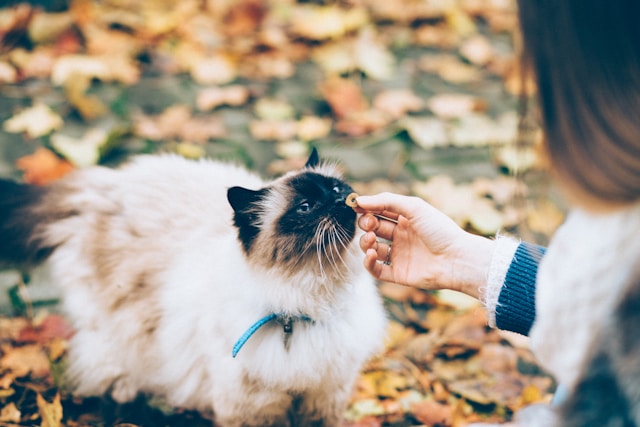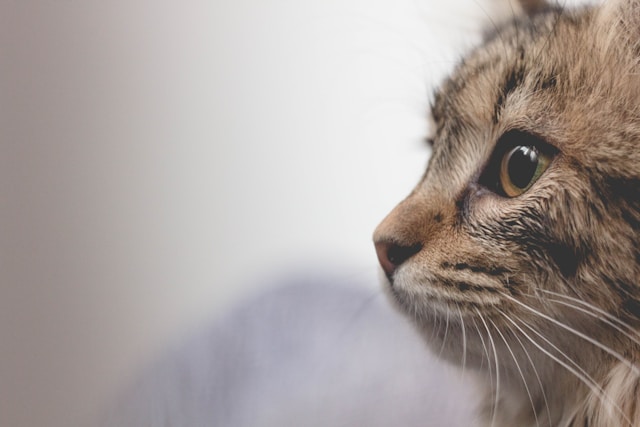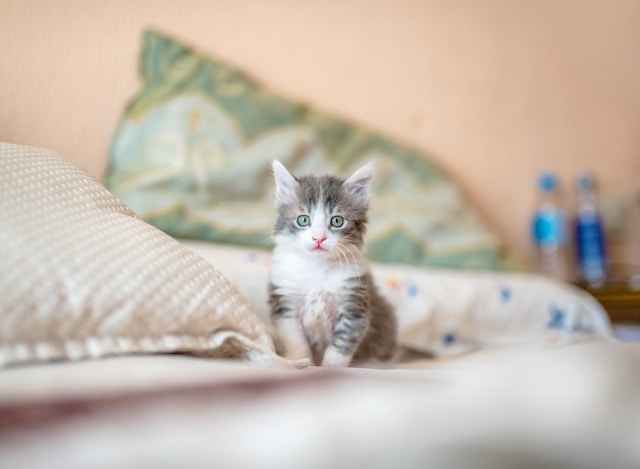What’s The Difference? Feline Veterinarians Compare Wet vs. Dry Cat Food

Introduction
When it comes to choosing the right diet for your cat, one of the most common decisions pet owners face is whether to feed wet or dry cat food. Both types of food have their advocates and potential benefits, but understanding their differences can help you make an informed choice that supports your cat’s health and well-being. As veterinarians, we often field questions about these two popular options. In this blog, we’ll delve into the key differences between wet and dry cat food, comparing their nutritional content, benefits, and potential drawbacks.
Nutritional Differences
1. Moisture Content
- Wet Cat Food: Wet food contains about 70-80% moisture. This high water content can help keep your cat hydrated and supports urinary tract health.
- Dry Cat Food: Dry food contains only 6-10% moisture. This lower water content may require you to ensure your cat drinks enough water to stay hydrated.
2. Caloric Density
- Wet Cat Food: Generally, wet food has fewer calories per ounce compared to dry food. This can be beneficial for managing weight and controlling calorie intake.
- Dry Cat Food: Dry food is more calorie-dense, which can be helpful for cats that need to gain weight or maintain energy levels.
3. Protein and Fat Content
- Wet Cat Food: Typically higher in protein and fat content, wet food often contains higher quality animal proteins and fats, which can be closer to a cat’s natural diet.
- Dry Cat Food: While dry food can also be high in protein, it may include more plant-based proteins and fats. The balance of nutrients can vary significantly between brands.
4. Carbohydrates
- Wet Cat Food: Usually lower in carbohydrates. Cats have a limited ability to metabolize carbs, so lower carbohydrate levels are generally preferable.
- Dry Cat Food: Often higher in carbohydrates due to the inclusion of grains or other fillers used to form the kibble.
Benefits of Wet Cat Food
1. Hydration
- Increased Water Intake: Wet food’s high moisture content helps ensure your cat consumes adequate fluids, which is especially beneficial for cats prone to urinary tract issues or those that don’t drink much water.
2. Weight Management
- Lower Caloric Density: The lower calorie density of wet food can be advantageous for weight management, helping prevent overfeeding and obesity.
3. Palatability
- Flavor and Texture: Many cats find wet food more palatable due to its aroma and texture. It can be a good choice for picky eaters or cats with reduced appetite.
4. Dental Health
- Less Plaque Formation: While wet food doesn’t clean teeth as effectively as dry food, its softer texture can be gentler on the teeth and gums, reducing the risk of plaque buildup compared to hard kibble.
Benefits of Dry Cat Food
1. Convenience
- Ease of Storage: Dry food is more convenient to store and handle. It doesn’t require refrigeration and can be left out for free feeding without spoilage.
- Long Shelf Life: Dry food has a longer shelf life compared to wet food, making it more practical for busy pet owners.
2. Dental Health
- Mechanical Cleaning: The crunchiness of dry kibble can help reduce plaque and tartar buildup, potentially improving dental health.
3. Cost-Effectiveness
- More Affordable: Generally, dry food is more cost-effective than wet food, making it a more budget-friendly option for some pet owners.
4. Portion Control
- Easy Portioning: Dry food can be easier to portion and measure, which can help manage your cat’s calorie intake more precisely.
Potential Drawbacks
1. Wet Cat Food
- Price: Wet food tends to be more expensive than dry food.
- Storage: Requires refrigeration after opening and can spoil if left out too long.
- Messiness: Can be messier to serve and clean up compared to dry food.
2. Dry Cat Food
- Hydration Issues: Lower moisture content can contribute to dehydration and may exacerbate urinary tract problems if your cat doesn’t drink enough water.
- Potential Fillers: Some dry foods contain fillers and by-products that may not be as nutritionally beneficial as high-quality protein sources.
- Obesity Risk: The higher calorie density can lead to overfeeding and weight gain if portions are not carefully controlled.
Combining Wet and Dry Cat Food
Many veterinarians recommend a combination of wet and dry food to balance the benefits of both types. This approach can provide the hydration benefits of wet food while also offering the convenience and dental benefits of dry food.
1. Balanced Diet
- Combination Feeding: Mixing wet and dry food can help balance nutritional intake and ensure that your cat receives a varied diet.
2. Hydration and Convenience
- Hydration Boost: Offering wet food alongside dry can help ensure your cat stays hydrated while benefiting from the convenience of dry food.
3. Portion Control
- Controlled Portions: Combining both types allows for better control over portion sizes and calorie intake.
Choosing the Right Food for Your Cat
1. Consider Your Cat’s Health
- Health Conditions: If your cat has specific health conditions such as diabetes, kidney disease, or obesity, consult your veterinarian for tailored dietary recommendations.
2. Evaluate Your Cat’s Preferences
- Palatability: Pay attention to your cat’s preferences. Some cats may prefer wet food, while others may enjoy dry food more.
3. Consult Your Veterinarian
- Professional Advice: Your veterinarian can provide guidance on the best diet for your cat based on their individual health needs, age, and lifestyle.
Conclusion
Both wet and dry cat foods have their advantages and potential drawbacks. Wet food offers benefits such as increased hydration and palatability, while dry food provides convenience and potential dental benefits. The choice between wet and dry food—or a combination of both—depends on your cat’s specific needs, preferences, and health conditions. Consulting with your veterinarian and considering your cat’s unique requirements can help you make the best decision for their diet and overall well-being.
By understanding the differences between wet and dry cat food, you can ensure that your feline friend receives a balanced and nutritious diet that supports their health and happiness.
FAQs
1. Can I feed my cat only wet food?
Yes, feeding only wet food is generally safe and can be beneficial for hydration. However, ensure it is nutritionally complete and balanced for your cat’s needs.
2. Is dry food better for my cat’s dental health?
Dry food can help reduce plaque and tartar buildup due to its crunchiness, but it is not a substitute for regular dental care. Regular veterinary check-ups and dental cleanings are important.
3. How much wet or dry food should I feed my cat?
The amount depends on your cat’s age, weight, and activity level. Follow the feeding guidelines on the food packaging and consult your veterinarian for personalized recommendations.
4. Can I switch my cat from dry to wet food?
Yes, but do so gradually to avoid digestive upset. Mix the new food with the old food over a period of several days to help your cat adjust.
5. What should I do if my cat refuses to eat one type of food?
Try offering different brands or flavors, or consult your veterinarian if your cat consistently refuses to eat. They can help determine if there are underlying health issues or provide alternative feeding options.
This blog provides a detailed comparison of wet and dry cat food from a veterinary perspective, helping you make an informed choice about your cat’s diet.




